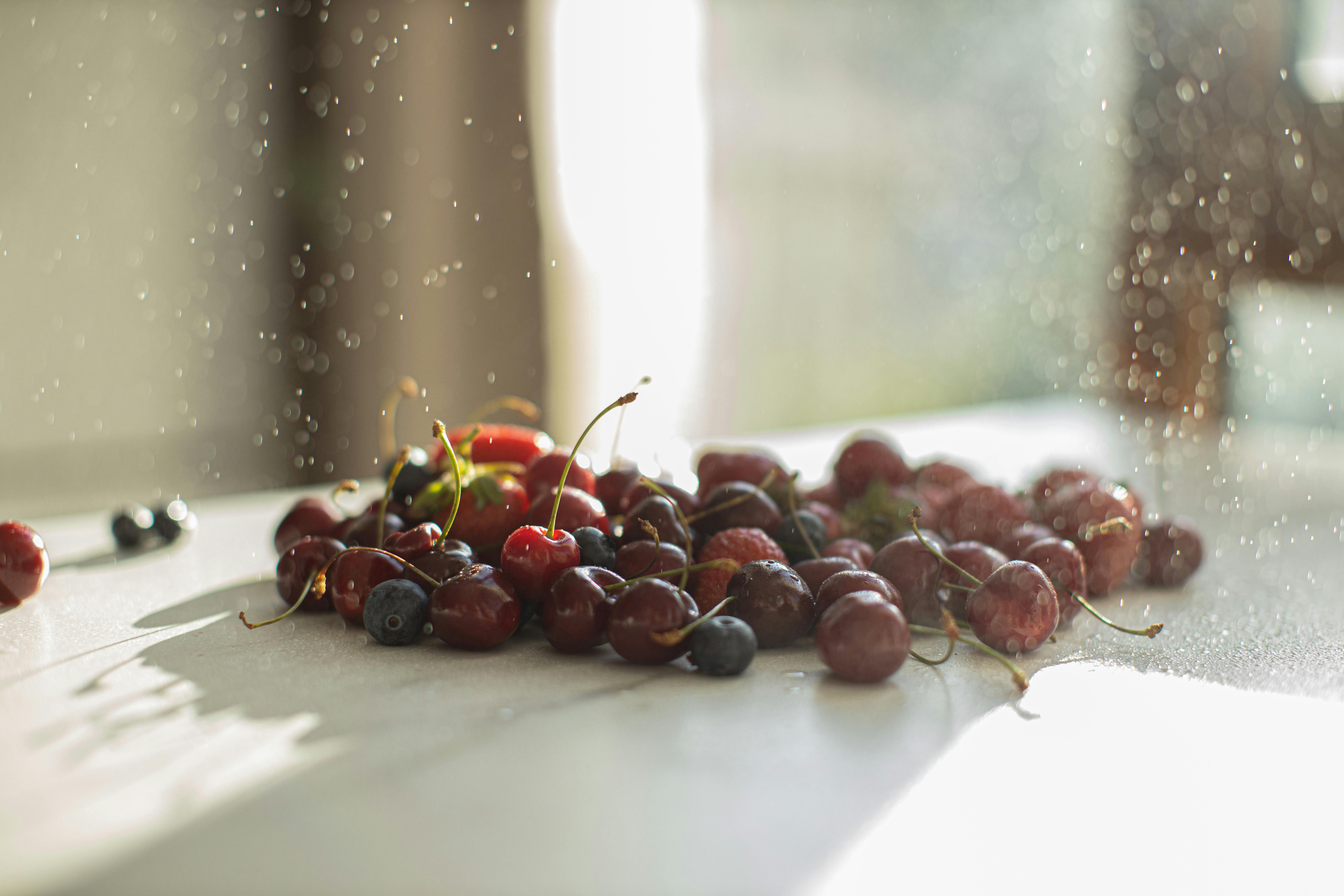Strawberries are a popular and delicious fruit that can be grown in the home garden. To ensure that your plants grow healthy and produce plenty of sweet, juicy strawberries, it’s important to water them properly. How often should you water strawberries? This article will answer this question and provide tips on the best way to water your strawberry plants.Strawberries should be watered regularly, at least once a week. The soil should be kept moist but not wet, so aim to provide enough water to keep the soil evenly moist. It is best to water in the morning, as this will allow the moisture to dissipate and the leaves to dry before evening. In periods of hot weather, strawberries may need extra water – up to two or three times per week.
Frequency of Watering Strawberries
Watering strawberries is an important part of their growth and production. As a general rule, strawberries should be watered every 3-4 days, with 1-2 inches of water each time. In hot weather, it may be necessary to water more often. The best way to determine if your strawberries need water is to check the soil around the plants. If it feels dry, it’s time to water. Overwatering can lead to root rot and other diseases, so make sure not to overwater.
When watering your strawberry plants, make sure that you don’t just sprinkle the water around the base of the plant. Water should be applied directly onto the soil around the crown and roots of the plant. Also, try to avoid wetting the foliage as this can cause leaf diseases like powdery mildew or gray mold. If possible, use drip irrigation or soaker hoses for watering your strawberry plants since this will ensure that only the roots and crown get watered and not the foliage.
Amount of Water
When watering strawberries, it is important to consider the amount of water needed. Strawberries need about 1 to 2 inches of water per week. Too much water can cause the berries to rot, while too little water can cause them to become dry and shriveled. It is best to water the plants deeply but infrequently. This will help ensure that the root system is getting enough moisture without causing any damage or rot.
Time of Day
Another important factor to consider when watering strawberries is the time of day. Early morning is generally the best time for watering strawberries as this allows for the soil and plant leaves to dry out before nightfall. This helps prevent disease and excessive moisture on the leaves, which can lead to mold and mildew growth. Additionally, this will help ensure that any fertilizers are absorbed by the soil before nightfall, which can help maximize nutrient uptake by the plants.
Frequency
The frequency of watering depends on a variety of factors such as temperature, soil type, and rainfall amounts. In general, strawberries should be watered once or twice a week during hot weather and less often during cooler weather. If there has been significant rainfall in your area, then it may not be necessary to water at all! It is important to check soil moisture levels before watering as this will help you determine whether or not additional water is needed.
Soil Type
The type of soil in which you are growing your strawberries also plays a role in determining how much and how often you should water them. Sandy soils tend to dry out quickly so they require more frequent watering than heavier soils such as clay or loam. Additionally, sandy soils also tend to be more prone to nutrient leaching so it may be necessary to use a fertilizer with higher nitrogen levels just after each watering session.
Overall, when it comes to watering strawberries there are several factors that should be taken into consideration such as amount of water needed, time of day for watering, frequency of watering sessions and type of soil in which they are planted in order ensure maximum health and productivity for your plants!
The Benefits of Proper Watering for Strawberries
Water is essential for strawberry plants to thrive. Without sufficient water, the plants will begin to suffer from dehydration and nutrient deficiencies. Proper watering of strawberries is essential to ensure healthy and abundant fruit production. It is important to monitor soil moisture levels regularly and provide adequate watering when needed. Here are some of the benefits of proper watering for strawberries:
Firstly, proper watering helps to reduce potential losses due to drought-related problems. Drought can cause damage to strawberry plants, leading to reduced yields or even complete crop loss. By providing sufficient water, the risk of drought-related problems is minimized.
Secondly, adequate water helps ensure optimal fruit quality. When properly irrigated, strawberries will have a better flavor and texture than those that are not properly watered. This can help increase consumer satisfaction with the product.
Thirdly, proper watering helps promote optimal growth and development of the plant. When the soil is adequately moistened, it provides an ideal environment for root growth and development. This in turn leads to higher yields.
Finally, adequate water also helps reduce stress on the plant caused by environmental factors such as heat or cold temperatures. When properly watered, plants are better able to withstand extremes in temperature that could otherwise lead to damage or death.
In conclusion, proper watering of strawberry plants has many benefits that can help ensure healthy and abundant fruit production. It is important to monitor soil moisture levels regularly and provide adequate water when needed in order to reap these benefits.
How Much Water Do Strawberries Need?
Strawberries are a favorite fruit among many, and the good news is that they don’t require a lot of water to grow. Strawberries need about 1 inch of water per week, either from rainfall or irrigation. It’s important to keep the soil evenly moist for best results, but not saturated. Too much water can cause strawberries to rot, so it’s best to err on the side of caution.
When watering strawberries, it’s important to use drip irrigation or a soaker hose if possible. This will ensure that the water is delivered directly to the roots without wetting the foliage. Wet foliage can make strawberries more susceptible to certain diseases and pests. It’s also important to avoid overhead watering as much as possible, as this can lead to fungal diseases such as powdery mildew and gray mold.
It’s also important to avoid overwatering by not applying more than an inch of water per week unless there is a severe heatwave or drought. During periods of prolonged drought, it’s best to give your strawberry plants an extra deep watering every two weeks rather than attempting to keep them constantly wet throughout the summer months.
Overall, strawberries are relatively easy-to-care-for plants that don’t require a lot of water in order to thrive. By following the guidelines above and providing your strawberry plants with an inch of water per week (either from rainfall or irrigation), you should have no trouble keeping them healthy and productive!

Signs of Too Little or Too Much Water for Strawberries
Water is essential for all plants, including strawberries. It is important to give your strawberry plants the right amount of water to ensure they remain healthy and produce a good harvest. Too much or too little water can both cause problems for strawberries. Here are some signs that indicate either too much or too little water for your strawberry plants.
If you are giving your strawberry plants too much water, the leaves may start to yellow and curl. This is a sign that there is an excessive amount of water in the soil and it is not draining properly. The roots may also become saturated with water which can lead to root rot. Additionally, the fruit may be soft and mushy if there has been too much water around it.
Conversely, if you are not providing enough water for your strawberry plants, the leaves will start to turn brown and wilt. This indicates that the soil has dried out and the plant is not receiving enough moisture. The fruit may also become small and dry if there isn’t enough water available to it. If these signs appear, it’s important to adjust your watering schedule so that the plant gets sufficient moisture without being over-watered.
Tips for Properly and Regularly Watering Strawberries
Watering strawberries correctly is essential for maintaining a healthy crop. Strawberries need an adequate amount of water to produce high-quality fruit. The amount of water needed varies depending on the climate, soil type, and rainfall. To ensure optimal production, it’s important to water your strawberries regularly and properly. Here are some tips on how to do that:
First, use a moisture meter to determine the soil’s moisture content. This will help you decide when and how much water to give your plants. You should also check the weather forecast so that you can adjust your watering schedule accordingly.
Next, make sure you’re using the right type of watering system for your strawberries. Drip irrigation is the most effective method as it allows water to be delivered directly to the root zone without wetting foliage or promoting disease development.
It’s also important to water your strawberries at the right time of day. Early morning is generally best as this allows time for leaves to dry before nightfall which can reduce disease risk. Avoid watering in the evening as this can encourage fungal growth on foliage overnight.
Finally, make sure that you’re giving your strawberries enough water but not too much. Overwatering can lead to root rot while underwatering can cause plants to become stressed and reduce yield potential. Aim for 1-2 inches of water per week depending on weather conditions and soil type.
How to Check if the Soil is Moist Enough for Strawberries
Strawberries are a popular garden fruit, and the right soil moisture content is essential for optimal growth and flavor. It’s important to check the soil moisture before planting your strawberries, to ensure that they have an ideal environment in which to thrive. Here are some tips on how to check if the soil is moist enough for strawberries.
The best way to determine soil moisture is with a moisture meter, which you can purchase at most garden supply stores. Insert the sensor into the soil at least two inches deep and wait a few seconds for a reading. A good moisture level for strawberry plants is 20-30%, so adjust your watering accordingly if you need to.
If you don’t have a moisture meter, you can also do a simple touch test. Take some soil in your hand and squeeze it gently. If it sticks together in a clump, then it has enough moisture; if it falls apart easily or feels dry, then it needs more water.
You should also check the drainage of your strawberry beds; poor drainage can lead to waterlogged soil, which can stunt growth or even kill your plants. To check drainage, dig a small hole about six inches deep and fill it with water; if it takes more than four hours for all of the water to drain away then you may need to improve your drainage by adding sand or compost into the mix.
Finally, keep an eye on your strawberry plants as they grow; brown leaves or stunted growth are signs of overwatering or underwatering respectively. If either of these occurs then adjust your watering schedule accordingly for better results. With these tips in mind, you should be able to keep your strawberry plants healthy and happy!

Conclusion
Strawberries are a delicious and nutritious summer fruit that requires specific care. To ensure that your strawberry plants remain healthy and produce plenty of fruit, it is important to provide them with adequate water. Generally, you should water your strawberries once or twice per week, ensuring that they receive about 1 inch of water each time. If temperatures are higher than usual or if your soil is dry, you may need to increase the frequency of watering. Additionally, mulch can help to conserve moisture and keep the soil temperature relatively consistent. Taking the time to adequately water your strawberries can help ensure that your plants remain healthy throughout the season.
Overall, with proper care and maintenance, you can ensure that your strawberry plants remain healthy and produce plenty of delicious fruit for months to come!



